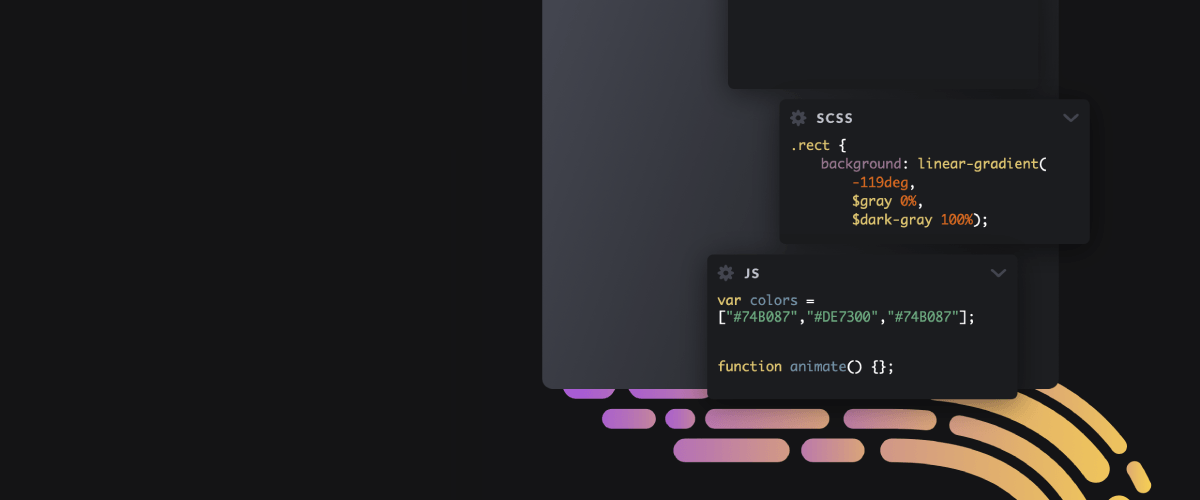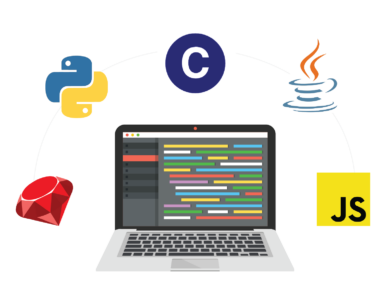The internet has become a vital mode of communication in the modern world. Through the internet, computers are interconnected and communicate with each other by sending and receiving data. A common way of internet communication is through the World Wide Web, referred to as WWW. It is a library of web pages/websites stored in web servers and accessible either internally or externally. Users can access information stored in the websites using various internet-connected devices, such as laptops or smartphones. While accessing the information on the websites, the data must be formatted, arranged, and rendered in a form that the end-users will understand. HTML, CSS, and JavaScript enable such actions. These three languages are the building block of websites and make the web work.
HyperText Markup Language (HTML)
HTML refers to a language that is used to create websites found on the World Wide Web. This language defines the structure of the content on the web pages. By the use of different HTML elements, the HTML syntax controls how text and multimedia data are displayed on a browser. Without this markup language, a browser could not know how to render data from the web pages such as images, paragraphs, videos, lists, and others. Therefore, for a website to display correctly, it must have proper HTML. HTML syntax is adhered to by all major web browsers such as Chrome and Mozilla. However, it is worth noting that HTML is not considered a programming language because it does not have logic.
HTML was created by Tim Berners-Lee, a scientist at a nuclear physics laboratory known as CERN. This first format of HTML was intended to be used in the distribution of well-structured documents for use by scientists.
As the World Wide Web became more popular, HTML was further developed to enable multimedia data and control layout access. In the year 1995, the first formal HTML was published by the Internet Engineering Task Force as RFC 1866: Hypertext Markup Language 2.0. Other developments were made from this original specification. In January 1997, the World Wide Web Consortium (W3C) released the HTML 3.2 Reference Specification. In December of the same year, W3C created HTML 4.0. W3C published HTML 4.01 in the December of 1999. In 2004, browser developers from different organizations formed the Web Hypertext Application Technology Working Group (WHATWG) that continued with further developments on HTML. As a result, the first W3C Recommendation for HTML5 (HTML 5.0) was published in 2014.
An HTML file format is distinct as it includes several items. The first thing on this file is a doctype declaration tag, written as <!doctype html>. This specifies the HTML version used for easier interpretation by the browser. This is followed by the <html></html> tags that tell the browser that whatever content is present should be read as HTML code. The web page content is placed between these HTML tags. Each part or element of a website is enclosed in HTML tags that dictate how it is rendered on the screen.
For instance, paragraphs are wrapped in between the <p> (opening) and </p> (closing) tags. These HTML tags can also have attributes that contain extra information about the elements. There are HTML tags for different types of data. For instance, <header> tag creates a header at the top of the website, <footer> creates a footer at the bottom of the web page, <nav> creates the navigation menu, and <video> describes videos.
Cascading Style Sheets (CSS)
CSS is a language that styles or defines the appearance of the content on a web page. It controls how HTML elements are rendered on the user’s device. In this regard, CSS can be said to be code that handles the look and feel part of a website as experienced by the end-user. Different aspects of an HTML element can be controlled through CSS, such as color, font, size of columns, spacing between data items, background images, and others. In the modern era, where various devices are used to access web pages, CSS controls how the websites are displayed on desktops, laptops, tablets, and smartphones. For CSS to have an effect on a Web page, it must be written on the HTML file or linked externally. It is worth noting that CSS is not a programming or markup language but a style sheet language.
In the early forms of the World Wide Web, the HTML files were coded to include formatting information. As a result, such web pages were difficult to write and write. This necessity gives rise to the development of CSS.
As the Web matured, an approach to divide HTML content and styling information was adopted. There were different competing ideas on how this could be achieved. The main contributors included Pei-Yaun Wei, Andreesen, and Håkon Wium Lie. The styling formats proposed by Wei and Andreesen were deemed as complicated. Lie’s idea was quickly accepted, and his proposal was named Cascading Style Sheet. In the year 1996, the first W3C CSS Recommendation (CSS 1) was published. However, the CSS 1 specifications were bulk, and hence it was slowly adopted by the web developers. This prompted the W3C to build on CSS 1 and develop CSS 2, which was later reformulated to CSS 2.1. Further developments led to the evolution of CSS 3, which was published as an official WC3 recommendation in the year 2011.
CSS syntax provides rules that specify the styles to be applied on one or more elements on the web page. For instance, if a website page contains ten paragraphs, it is possible to style each paragraph differently through CSS. The formatting rule comprises a selector and a declaration part that is enclosed in the curly brackets. This selector helps to select the HTML element to be styled. Selectors may be HTML elements, for example, ‘p’ for a paragraph, or elements specified by attributes such as class or id. Each declaration contains a property, a semi-colon, and a value. A property outlines how an element can be styled while the value chooses one possible appearance. For instance, if a paragraph text is to be in red, the CSS code will be p {color: red;}.
JavaScript (JS)
JavaScript is a fully-fledged programing language that makes a web page dynamic and interactive. Incorporating JavaScript in a website allows different functionalities, and the users can interact with the rendered content. JavaScript is mostly used as a client-side language because it runs on the user’s computer browser. However, it can be used as a server-side programing language. Due to its wide application, JavaScript is currently one of the most popular programming languages. This is because this language enhances the user experience by converting the static HTML web page into a dynamic and interactive one. Modern websites like Facebook, YouTube, and Amazon use JavaScript. Other web-based computer games also use this language.
During the early days of the Web, any website could only be static since there was no way of adding dynamic behavior. Java coding language was gaining popularity at that time, and Netscape Communications wanted to make it available in browsers. However, Java was complex and large and did not appeal to web programmers. In 1995, Brandan Eich, who worked for Netscape, developed a scripting language and named it Mocha. This language quickly changed its name to LiveScript and then to JavaScript. However, JavaScript has little in common with Java.
By the year 1997, JavaScript had rapidly grown, which created the need for proper maintenance and development. Netscape handed the program to the European Computer Manufacturers Association (ECMA), an organization that aimed at the standardization of computing. The ECMA specifications are known as ECMAScript 1. This has seen many developments over the years, with the latest being the 12th edition of ECMAScript. At the moment, modern JavaScript frameworks have been developed and have enabled the creation of complex web pages.
JavaScript code is embedded on a web page through an external link or can also be written on the HTML file. JavaScript file has the extension of .js. This language enables the creation of variables that may hold different data types. The main types of variables include string, number, boolean, array, and objects. In addition, JavaScript has mathematical operators that enable calculations. Other aspects of this language include conditionals, functions, and events. When these aspects are adopted in a web page, it becomes dynamic and interactive.
Conclusion
As mentioned throughout this article, HTML, CSS, and JavaScript are essential languages in web development. HTML creates the structure of the web pages. CSS controls the feel and look of the web pages by styling and formatting content. JavaScript controls the behavior of the content rendered and allows the users to interact with the website. In the modern world of technological advancement, the three languages work together to create well-structured and interactive websites.



Nice , what IDE code editors would you recommend?
1. Sublime Text 3
2. Visual Studio Code
3. Atom
4. Notepad ++
5. Komodo Edit
definitely try out these code editors.. from my personal experience, and my using, I can say these were the best, I tried them both on macos and windows.. of course some better editors can be found depending on whether you want html or python also..
I want to try and make a nice html website with some parts of the CSS , and also some cool features like live chat and such…
There are a lot of tutorials on how to achieve.. you can either make it by HTML or a CMS like WordPress. Just check the Youtube. Or request from the team of M-Z Academy. For the live chat, you can try out tawk.to as it is free solution.. I think M-Z Academy is using LiveChat software, but its expensive.
Thank you for the comment! We actually have a tutorial video of Basic HTML, which you can access here: https://bit.ly/3idjW13
We’re working on producing another video on how to incorporate CSS into the website.
As Veerappan shared, tawk.to is a great solution for live chat.